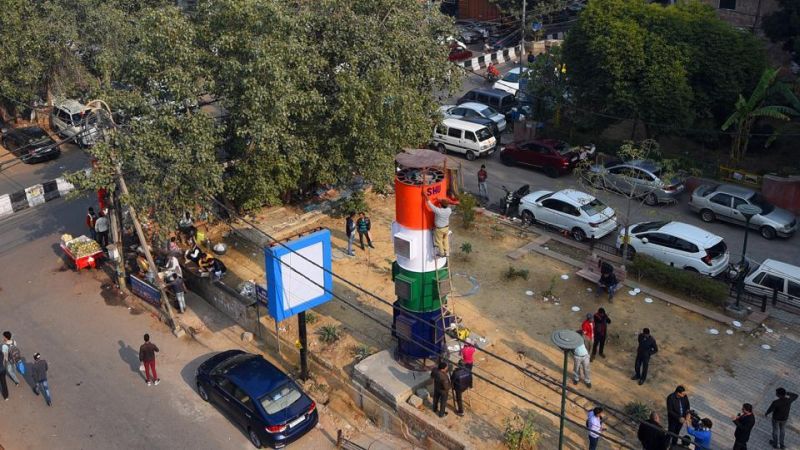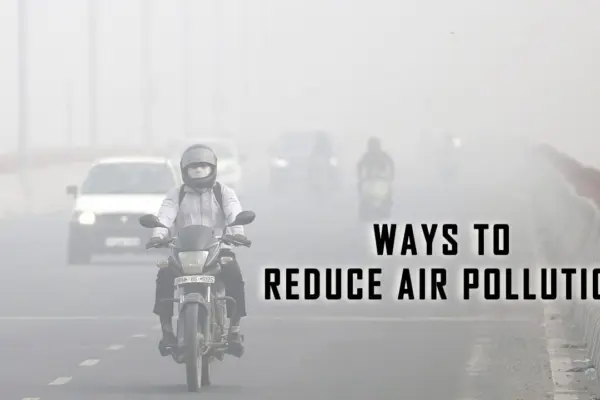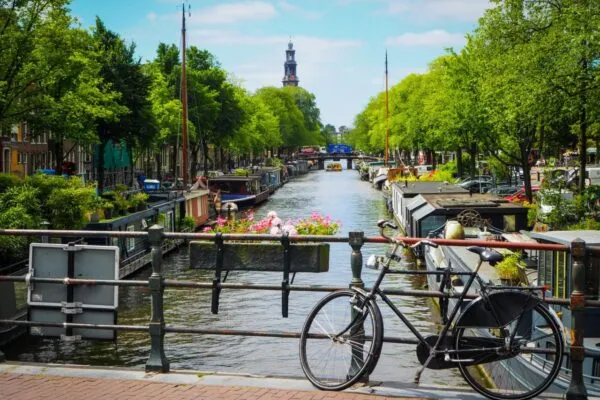Delhi Gets First-Ever Smog Tower to Battle Escalating Air Pollution
Every year in the winter season, Delhi’s air quality deteriorates to very poor and severe categories of the Air Quality Index (AQI). Envisioning a solution to tackle air pollution in the city, the government has installed Delhi’s first smog tower at Lajpat Nagar central market on January 3, 2020. Smog towers are the devices that can work as large-scale air purifiers, fitted with multiple layers of air filters.

Smog Tower at Lajpat Nagar central market / Image: Hindustan Times
The 20-feet-tall tower is fitted with exhaust fans to suck in polluted air and can remove up to 80 percent of the particulate matter (PM 2.5 and PM 10) – the primary pollutant in the city’s air. According to the experts, the aim is to create “clean air zone” in the area which sees an average footfall of 15,000 people every day. The purifier may treat 250,000 to 600,000 cubic metres of air per day.
In November 2019, the Supreme Court had asked the Centre and the Delhi government to come up with a road map on installing smog towers in the National Capital Region (NCR) to battle the escalating levels of air pollution.
Taking inspiration from China, which is also battling air pollution over the past few years, the smog tower has been built in Delhi. China has two smog towers now, one in capital Beijing and the other in Xian City.
The Delhi experiment is being headed by the Indian Institution of Technology (IIT) Bombay in and IIT Delhi in collaboration with the Central Pollution Control Board (CPCB). The University of Minnesota, which has helped build a smog tower in Xian, northern China, is also involved in the process.
Also Read: Depressing Story of Delhi Choking on Air Pollution
According to the Lajpat Nagar Trader Association members, the tower has been installed in an open area above a covered drain in the market by the traders’ body with the help of east Delhi MP Gautam Gambhir. The equipment cost of the smog tower came to about Rs 7 lakh, which is being borne by the Gautam Gambhir Foundation, an NGO being run by the parliamentarian and the former cricketer. The market association will bear the running cost of the device.
The General Secretary Traders Association Lajpat Nagar, Ashwani Marwah said,
The running cost of the facility will be around Rs 30,000 which will be borne by the traders’ association of Lajpat Nagar. This tower will purify the air within a circumference area of up to 750 metres. Such initiatives are important to combat air pollution in Delhi, which has also become a pollution capital.
According to Marwah, the tower stands on a four ft. high platform on a covered drain near Veer Savarker Marg in Lajpat Nagar central market. He further added that in future more such initiatives would be launched to control air pollution in the area.
The installation of smog tower has made the people of the city happy and hopeful.
Delhi gets its first #SmogTower ‘Shudh’ to tackle #AirPollution
The massive 20ft-tall air-purifier
inaugurated by BJP MP Gautam Gambhir has been installed at S.Delhi’s Lajpat Nagar market
The aim is to create a clean air zone with an estimated 80% reduction in particulate matter pic.twitter.com/X00Knk6kP9— Shivani Sharma (@Shivani2297) January 4, 2020
#Delhi gets first #smog tower to combat #Airpollution in LajpatNagar, cost borne by @BjpEastdelhi‘s #MP @GautamGambhir Foundation
– delhi news – Hindustan Times pic.twitter.com/4SYljfDAha— The Sunil Kapoor™ (@sunilkapoor8) January 3, 2020
Where people and authorities are optimistic about its success, experts are skeptical of the success of smog tower in Delhi.
Anumita Roychowdhury, executive director (research and advocacy) at Centre for Science and Environment revealed that there was no data available to support the claims that these towers clean up outdoor ambient air quality.
In a city like Delhi, in an open outdoor environment, where pollution levels are high, weather is dynamic and sources of pollution multiple, investing in such devices is not feasible. Nowhere in the world have we seen any data published to establish that this technology improves air quality. The same money must be spent in reducing emissions. We need real action to cut down on real emissions.
Said Roychowdhury.
D. Saha, former head of CPCB air laboratory, said that smog towers are not suitable to meteorological conditions of Delhi. Unlike other cities in the world, Delhi does not has smog but fog and high amount of dust particles in the air.
He said,
There is a constant intrusion of dust in Delhi because of various geographical and local factors. How much can a filter suck? Rather than heavy investment technologies like these, citizens must adopt initiatives, which are more constructive and sustainable such as car-pooling, limiting use of private vehicles, greening and controlling ground level dust, among others, which can go a long way in improving the air quality.
It would be interesting to notice the feasibility of the smog tower in Delhi. And if the project succeeds, the country’s battle against air pollution is half-way done.
Via: Hindustan Times


